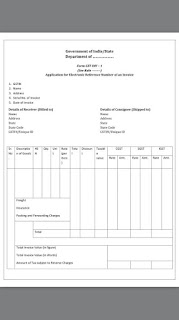1) E-Way Bill will be required for movement of all goods, whether *within the state or across states*. E-way bills is even required for transport of *goods outside the GST ambit*, for example *exempt goods like agricultural products*.
2) *Entire process requires participation by* Supplier, Transporter and Recipient. For transport of goods exceeding *Rs 50,000* in Value-
- *Supplier* to upload details onto the GSTN portal.
- *Transporter* (In case of Third Party Transport Company) will upload further details to create a final e-way bill. This e-way bill is to be carried along with the goods that are being transported. Upon generation of the e-way bill on the GSTN portal, a unique e-way bill number (EBN) shall be made available to the supplier, the transporter and the recipient of goods.
- *Recipient of the goods*- if a registered entity under GST, has to communicate its acceptance or rejection of the consignment covered by the e-way bill, *within 72 hours of the details being available on the GSTN* portal. Else, the recipient is *deemed to have accepted the details*.
3) In Case of an Accident if goods would be transferred from one vehicle to another than transporter has to create a new e-way bill on the GSTN portal, before further transit.
4) Multiple consignments are to be transported in one vehicle (say, a lorry is catering to three different suppliers), the transporter is required to indicate the serial number of the e-way bills generated in respect of each such consignment on the GSTN portal. A consolidated e-way bill in the required form is to be generated by the transporter prior to the movement of goods.
5) *Validity period of the e-way bill*, which is dependent upon the distance involved for transport of goods-
- Distance less than 100 kms - validity 1 Day
- 100 Km to 300 km- Validity 3 Days
- 300 Km to 500 km- Validity 5 days
- 500 Km to 1000 km- Validity 10 days
- More than 1000km- Validity 15 days


